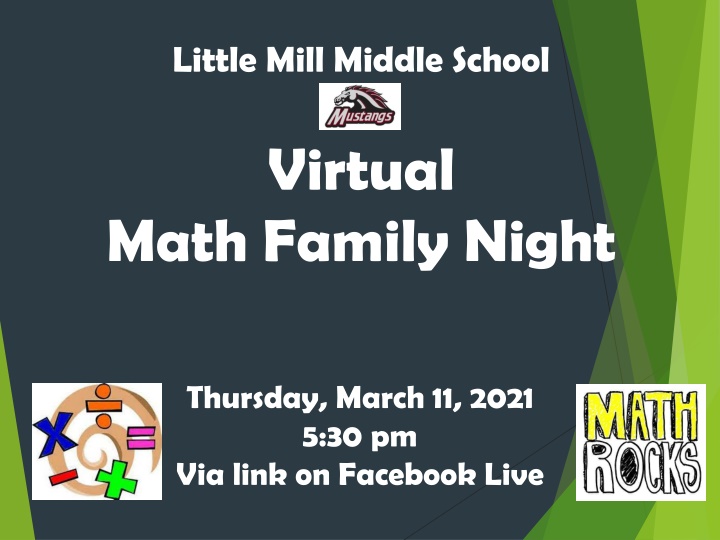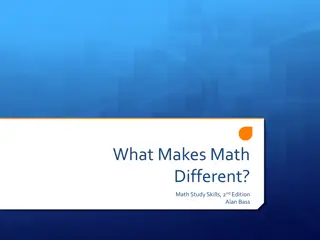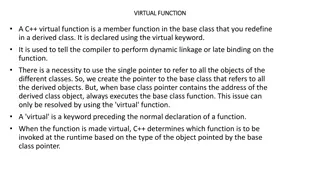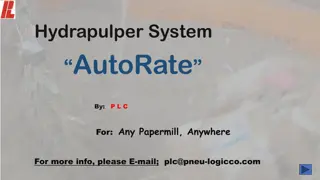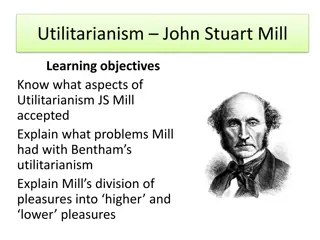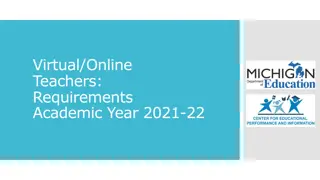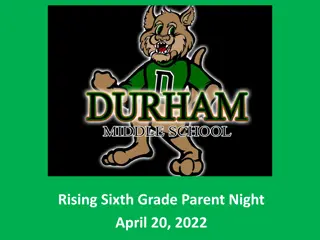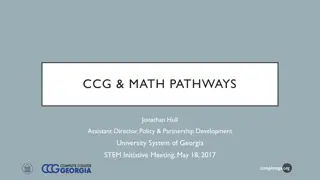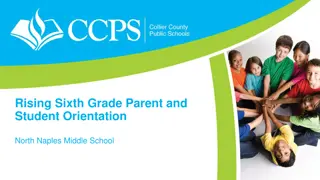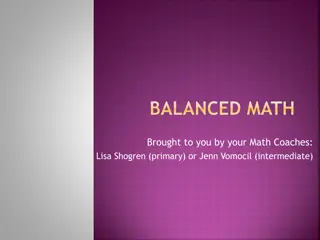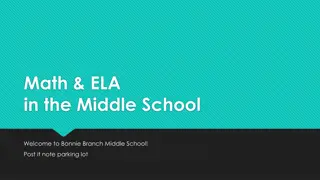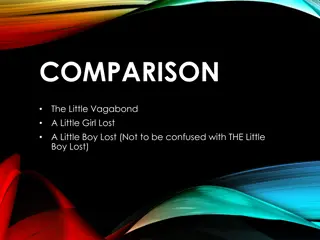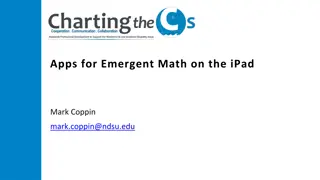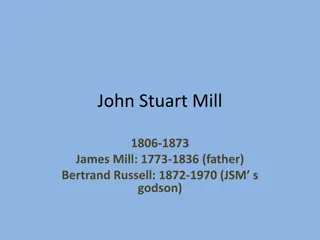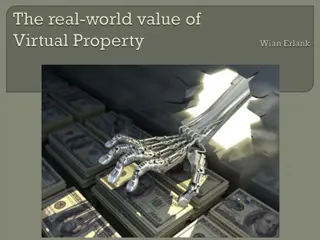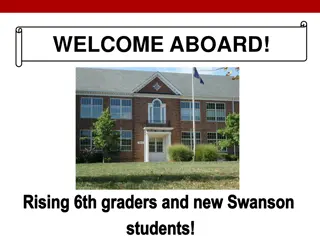Little Mill Middle School Virtual Math Family Night - March 11, 2021
Little Mill Middle School is hosting a Virtual Math Family Night on Thursday, March 11, 2021, at 5:30 PM. The event aims to engage parents and families in math education, provide resources, and gather feedback. Title 1 Staff will lead the program, discussing how students benefit from Title 1 funding and the importance of building staff and parent capacity for family engagement. Attendees can participate via a link on Little Mill's Facebook page.
Download Presentation

Please find below an Image/Link to download the presentation.
The content on the website is provided AS IS for your information and personal use only. It may not be sold, licensed, or shared on other websites without obtaining consent from the author.If you encounter any issues during the download, it is possible that the publisher has removed the file from their server.
You are allowed to download the files provided on this website for personal or commercial use, subject to the condition that they are used lawfully. All files are the property of their respective owners.
The content on the website is provided AS IS for your information and personal use only. It may not be sold, licensed, or shared on other websites without obtaining consent from the author.
E N D
Presentation Transcript
Little Mill Middle School Virtual Math Family Night Thursday, March 11, 2021 5:30 pm Via link on Facebook Live
Virtual Math Family Night Thursday, March 11, 2021 5:30 pm Live via Little Mill s Facebook Page Little Mill Middle School Agenda Welcome and Introductions Input/ Feedback Opportunities Building Staff Capacity and Building Parent Capacity Math Resources and Activities Parent Feedback
Little Mill Title 1 Staff Kari Shepherd Lead Teacher Jackie Suddith Language Arts Anne Marie Sasser Family Engagement Coordinator
How do Little Mill students benefit from Title 1 funding?
Little Mill Middle School is identified as school wide Title I as part of the Elementary and Secondary Education Act of 1965(ESEA). A school wide Title I program ensures the success of all students. Everyone has access to the numerous resources and materials purchased with Title I funds, including I Pads, laptops, computer programs, books, manipulatives, and learning games. Because of Title I, you and your child have access to excellent resources and enriching programs.
Building Staff Capacity (for Family Engagement) What does it mean? Teachers and staff will participate in professional learning activities that focus on the following required topics: The value and utility of contributions of parents How to reach out to, communicate with, and work with parents as equal partners Implement and coordinate parent programs Build ties between parents and the school
Opportunity for Parent and Family Input/Feedback If you have any input/feedback to offer about Building Staff Capacity (for Family Engagement), please share by contacting our Family Engagement Coordinator, Anne Marie Sasser, at 678-965-5000 ext. 342203 or amsasser@forsyth.k12.ga.us
Building Parent Capacity What does it mean? The school will provide and parents will participate in activities that ensure effective involvement of parents and to support a partnership among the school involved, parents, and the community to improve student academic achievement.
Opportunity for Parent and Family Input/Feedback If you have any input/feedback to offer about Building Parent Capacity, please share by contacting our Family Engagement Coordinator, Anne Marie Sasser, at 678-965-5000 ext. 342203 or amsasser@forsyth.k12.ga.us
Math Standards for 6th-8th can be found at Georgiastandards.org Georgia Math Standards 6th-8th
Math Focus - GA Milestones How can parents truly help students at home with math? Play games and provide practice opportunities!
Geometric Shapes Chart
Geometry Scavenger Hunt pdf Geometry Scavenger Hunt What geometric shapes can you find at school, at home, in your neighborhood, or at a local park?? Background Geometric shapes are everywhere! Practice observation skills and notice examples of geometric shapes in this scavenger hunt, and then sketch and write about each shape. This activity can be very specific for example, focusing on different types of triangles or it can be very broad and include a variety of different shapes. Materials Geometric Shapes chart (pdf) paper (one or more sheets of 8.5" x 11" white paper; one sheet of colored paper) clipboard or book to support your paper pencil colored pens stapler digital camera (optional) printer (optional) glue or tape (optional) Try This 1.Use the Geometric Shapes chart to review shapes that you know and to identify shapes that you hope to find on your scavenger hunt. 2.Fold the paper in half (short end to short end) to create a four-page booklet. Plan to use each page for one or two shapes. If you re going to add photos, you ll probably need a whole page for each shape. Decide how many shapes you ll try to find and fold additional sheets of paper as necessary. 3.Take your materials to your chosen location. Choose an interesting location or two to stop and make observations. 4.When you spot a geometric shape, briefly sketch the game court or structure where you found it, and then indicate the shape with a darker line. Write the name of each shape, and describe where you found it (for example, square, found in four-square court. ) If you have a digital camera, take pictures of your shapes. 5.If you took photographs, get them printed, and then glue or tape them to your pages. 6.You can use colored pens to highlight particular shapes or words. 7.Assemble your pages into a booklet, using the colored paper as the cover, and staple the booklet along the folded midline. Write a title and your name on the front cover. Extensions Add a measuring tape to the materials listed above. In addition to finding shapes, measure lengths, widths, diameters, and so on to find perimeters, areas, and volumes. Find several examples of the same shape, find their dimensions, and compare the perimeters, areas, or volumes.
Math Games with Dice Math Games with Dice No matter the age, we should always be building our children's number sense and flexibility with numbers. Having fun games that can be used anywhere and anytime is essential to our children's love for learning. Use dice to help practice math facts and develop a stronger understanding of whole numbers, fractions, and decimals! Below are some fun dice games to be played at third grade and higher: Factor Dice: Roll 2 (or more) dice and multiply to find the product. Decide whether the product is composite (has more than 2 factors) or prime (has exactly 2 factors, 1 and the number itself). If it's composite, find all the other factor pairs of the number. Record all the factor pairs for each roll, whichever player has the most factor pairs after 5 turns wins! For example: roll a 6 and 3: multiply 6 x 3 = 18. 18 is composite and its other factor pairs are 18 x 1 and 9 x 2. Multiple Dice: Roll 2 (or more) dice and add them to find the sum. Say and/or record the next 10 consecutive multiples of that number. For example: roll a 6 and 2 so add 6 + 2 = 8. Find 10 multiples of 8: 8, 16, 24, 32 . Multiplication Dice War: Using 2 dice each, players roll to find the greatest product. Keep track of points using tally marks. The first player to 10 tallies wins (or set whatever goal you would like)! Variations: Play to find the lowest product; use 3 dice instead of 2. Multi-Step Dice: Using 3 or more dice with different colors players decide the rules ahead of time. If using 3 dice, try 2 green and 1 blue. Roll all 3 dice at once, and add the 2 green and multiply the 1 blue die mentally. The next time, multiply the 2 green dice and subtract the 1 blue die. Using different variations of play will increase flexibility in number sense and excitement in math. Fraction Dice: Using 2 different colored dice, designate which colors are the numerator and denominator. Roll the dice to create your fraction. For example, if a player rolls a 4 and 5, the fraction is 4/5 or 5/4 depending on the rules established. From this fraction you can: - Convert it to a decimal - If it's improper (like 5/4), convert it to a mixed number - Compare with a partner's fraction to find the greatest or least fraction - Roll 6 dice and make 3 fractions, in order from least to greatest - Plot it on a number line
Helpful Math Resources https://sites.google.com/forsythk12.org/helpfulresources/home
Math Games by Grade Level and Skill https://www.mathgames.com/
Walk a Math Trail A math trail is a walk with various stops where you look at math in the world around you and ask questions about it. Math trails are a great way to stimulate interest in math especially among students in middle school or high school, when classroom math often becomes more abstract. A math trail helps students see math, touch it, and investigate it on their own. Get outside and explore geometry (and other math) all around you. Still not sure how to get started? Many adults aren t as comfortable with math as they would like to be. Before leading kids on a math trail, try one for yourself. Look for ways to find shapes and numbers in your surroundings and ask yourself questions about them. To make a geometry math trail, start with questions like these, or make up some of your own: Find the first letter of your name in your surroundings. (It s especially fun if it s not on a sign.) Look at the architecture of a building and the different shapes and patterns in its design. Which shapes or patterns give this building its character? Find an unusual tiling pattern in a floor, a patio, or anywhere else you can find repeating shapes on a flat surface. Ask questions about how the pattern repeats and fits together. Sit near a street and watch a tire of a slow-moving car. How does the valve on the tire move? Can you trace its path? Figure out the area or volume of a very large shape in your surroundings. To measure the shape, you can use your own body or whatever else is handy.
Tip for Parents Access Parent Portal and itslearning * You can set up your own account by bringing in your ID to the front office and asking for the official link to be sent to your email Communicate with your student s teachers Talk to your student and ask questions
Parent Feedback Please provide us with some feedback and fill out the parent survey. Was the information you received tonight useful? What other topics would you like more information on? What trainings/ classes would you be interested in ? What trainings would you like for teachers to participate in so that we can better serve your family?
Thank you for checking out our Virtual Math Family Night ! Please contact our Family Engagement Coordinator, Anne Marie Sasser, at 678-965-5000 ext. 342203 or amsasser@forsyth.k12.ga.us if you are interested in any supplies/ materials to carry out these activities at home with your student. These resources will be posted on the Title 1 page of our school website for you to access.
